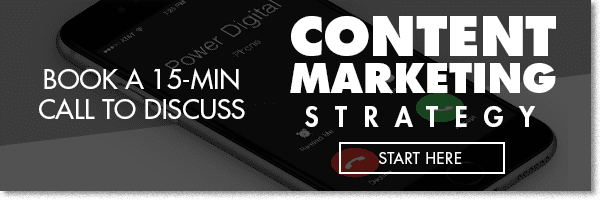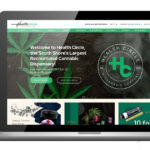The decision to perform a service in-house or hire a third-party is one that executives make often. This is true for the decision to have marketing divisions, writing services, legal teams, and more. And it’s true across all industries.
The same holds for a service that B2B companies often rely on for finding new clients: outbound email marketing campaigns.
What are Outbound Email Campaigns?
When B2B companies want to reach out to other businesses, they can use a process of cold emailing to inform others about their services. This is known as an outbound email campaign. Its conversion rate is typically low, somewhere between 1-5%, but the sheer quantity of emails creates better returns than both social and search marketing.
This isn’t anything new. Outbound email campaigns are the logical extension of cold calling and door-to-door selling—only it’s utilizing modern technology to help. It’s a powerful marketing technique that, when used correctly, can have returns of $44 for every $1 spent. The question is not whether you should or should not capitalize on this strategy; it’s whether you want to perform this task in-house or hire a marketing agency to help.
Outbound Email Campaigns: In-House or Agency?
To gain the returns mentioned above, you need to capitalize on three aspects of email campaigns:
- Conversion Optimization
- A/B Testing
- Effective Messaging
Let’s dive into these marketing efforts and explain which strategy an in-house team and an agency would use for each one.
Conversion Optimization
It is not the job of email campaigns to get each potential client to open your email, nor is it to get them to read your email. The point of email campaigns is to drive conversions. Are we being nitpicky here? Absolutely.
Companies can boast a high click-through rate; they can brag about their reply rate. But the only question that really matters is: did you gain new clients by the end of your email marketing campaign? For that, you need to work through each step of the conversion one at a time.
- Title of the email – The subject line will determine if the person on the other end opens the email or not. Avoid using sales phrases and gimmicky slogans, as these cause emails to be deleted before they’re read.
- Open Rate – The first step in optimizing conversions is to ensure people are reading your emails. This means gaining an open rate above 50%. To do this, keep changing and adjusting the subject line of your email.
- Body of the email – Once the potential lead has opened your email, the meat of the message is what’s going to determine whether it’s worthy of a response. The ideas you must get across are: What is your business? and Why should they work with you?
- Reply Rate – If you have a strong message with a compelling email, people will respond to you. Typically, you want to shoot for a reply rate above 5%. Above 10% is optimal.
- Button or no button – To include a button or not to include a button, that is the hotly debated question. Some claim a button is better than a link; others say it’s a gimmick people immediately associate with marketing and sales. With the effectiveness being heavily dependent on the industry, it’s best to answer the button question on a case-by-case basis.
- Click-Through Rate – One useful factor that buttons can easily measure is click-through rate. This should be higher than the reply rate.
- Call to Action – Your call to action (CTA) is what pushes people to do something. Do you want them to reply? Do you want them to hop on a phone call? Do you want them to click a link to your services page? This should be clearly defined and understood by the action verbs in your CTA.
- Conversion Rate – While the CTA doesn’t automatically translate one-to-one to the conversion rate, the job of the CTA is to incite action. If the open and reply rates are high but conversions are low, readjust your CTA and try again.
In-House vs. Agency
These details are more of an art than a science. You may have an idea of what will work and won’t. However, it’s only once you’ve practiced, tweaked the messaging, tested and retested, that you start to understand what’s working and what isn’t.
- In-House – Oftentimes, in-house teams will have general knowledge on how to improve the email but won’t necessarily understand the industry specifics.
- Agency – With multiple clients across various industries, agencies are better equipped to understand what type of messaging, header, and button usage will work within your sector.
A/B Testing
To determine which header is best or which CTA is stronger, companies need to perform A/B testing. With this method, two different email templates are created where everything is kept the same except for the component you’re testing. After sending out hundreds of emails with template A and template B, the data will determine which performed better.
For a quick example: You could create an A/B test around a button’s effectiveness.
- Template A has a CTA button at the bottom of the email
- Template B has a CTA message at the bottom of the email
In this scenario, using the same subject line and body of the email, you’ll be able to decipher whether your target audience prefers a button or no button. This can be done in a similar manner to compare:
- Subject lines
- Email text
- CTAs
For the best results, A/B testing should be used in every facet of the email campaign. The idea is that unless you have a 100% open rate, reply rate, and conversion rate, there will be areas of improvement.
In-House vs. Agency
What’s difficult about A/B testing is the number of variables that can be changed and the number of possibilities that work for each variable. To perform A/B testing properly, you may go through ten different subject lines before finding one that clearly outperforms the others.
- In-House – A/B testing takes time and patience above all else. For teams that are balancing email campaigns along with the three other major forms of online marketing (social, content, and search), time will be a limiting factor.
- Agency – Utilizing their deep resources and experience, agencies can perform A/B testing on a massive number of variables until they discover the high-performing options.
Effective Messaging
The body of the email is where the real magic happens. This is where a random person will learn who you are, what your company does, and why they should use your service. All in three to five sentences. All without meeting you. If that’s not magic, what is?
The key is effective messaging. It’s necessary to condense, revise, optimize, and repeat when editing the language of your email. Be creative and concise. If you only have four sentences—what should you write?
In-House vs. Agency
When creating effective messaging, it might seem like an in-house team will better understand how to portray the company. Although, both sides have their strengths and weaknesses.
- In-House – While in-house teams can see the operations going on at a ground level, they have to be able to condense all the information about the business into a sentence or two. Many in-house marketers tend to over embellish whereas a third-party would be able to cut to the chase.
- Agency – An agency can typically determine the crucial selling point of a company because it’s the reason they wanted to work with that company in the first place. Agencies have the skills to toss aside the “relevant yet unnecessary” information, leaving behind a clear, concise call to action.
Understanding the Legality of Outbound Email
While outbound email campaigns are perfectly legal, there are some aspects that can quickly turn an inquisitive email into the category of spam. And this isn’t the kind of spam that gets sent right to the spam folder on your email account—well, it might be that too. This is spam that goes against the CAN-SPAM Act, an act passed by the Federal Trade Commission to enforce strict guidelines for commercial emails.
Some of these guidelines are:
- The subject line cannot deceive the reader about the body of the message
- There must include an “out” within the body text where the reader can unsubscribe to further emails.
- These opt-outs requests must be honored immediately, with no additional emails sent
- Each email must include the address of the company
- The email must disclose that it is there for advertising purposes
The fines associated with the CAN-SPAM Act are harsh, about $42,530 per email. With a typical email marketing campaign starting at about 1,000 emails (on the low end), you can see the importance of understanding this law.
In-House vs. Agency
Due to how email campaigns work, one wrong slip-up could send a small or mid-sized company into bankruptcy. This is why many businesses choose to leave this type of online marketing in the hands of those who do this on a daily basis.
- In-House – Again, these regulations aren’t rocket science and can be followed with proper preparation and oversight. In-house teams that are competent will be able to read the act and follow each regulation.
- Agency – One of the benefits of an agency is that these regulations are built into their system from the get-go, avoiding the risk of a monumental fine altogether.
Which One Should You Choose?
Both an in-house team and an agency are well-equipped to handle the complexities of an outbound email campaign. The question to ask yourself is whether you have the time and resources within your marketing department to lead an effective campaign.
Oftentimes, in-house marketing teams are in charge of running social, search, email, and content marketing for a company. With this division of resources, the intricate details of A/B testing, effective messaging, and conversion rate optimization can be left behind.
Utilizing an agency that specializes in these types of marketing services will have various benefits and will allow for the necessary resources to back the marketing campaign and for the best results to shine.
Sources:
Word Stream. What’s a Good Conversion Rate? (It’s Higher Than You Think). https://www.wordstream.com/blog/ws/2014/03/17/what-is-a-good-conversion-rate
Campaign Monitor. 70 Email Marketing Stats Every Marketer Should Know. https://www.campaignmonitor.com/blog/email-marketing/2018/12/70-email-marketing-stats-you-need-to-know/
FTC. CAN-SPAM Act: A Compliance Guide for Business. https://www.ftc.gov/tips-advice/business-center/guidance/can-spam-act-compliance-guide-business
The post Hiring an Agency vs. Doing Your Own Outbound Email appeared first on Power Digital.
Article From: "Carly Biggs" Read full article
 SERPCOM is a full-service Boston digital marketing agency focused on improving online visibility, increasing traffic, raising revenue and providing SEO services.
SERPCOM is a full-service Boston digital marketing agency focused on improving online visibility, increasing traffic, raising revenue and providing SEO services.
SEO-first: A fundamentally better approach to online marketing.
Digital Marketing | SEO | Web Design & Development | Search Engine Marketing

SERPCOM is a full-service Boston digital marketing agency focused on improving online visibility, increasing traffic, raising revenue and providing SEO services. SEO-first: A fundamentally better approach to online marketing.
Digital Marketing | SEO | Web Design & Development | Search Engine Marketing
SERPCOM is a full-service Boston marketing agency focused on improving online visibility, increasing traffic, raising revenue and providing SEO services for leading brands.
Maximize the value of your website and turbo charge your online marketing efforts with SERPCOM. Call or click the button and start making the web work for you.
Just click on the Phone Number to dial on your phone:





